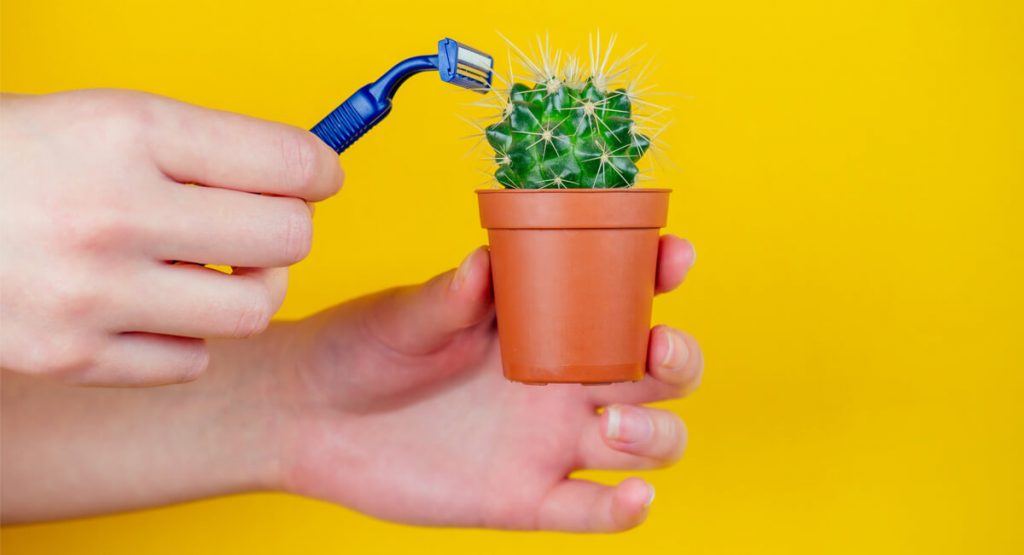
The age of hair removal has transformed women and men alike. But not all the methods are appropriate for our skin type. Here’s the pros and cons for each method.
On the topic of unwanted body hair, it must first of all be said that the particularly severe forms of hypertrichosis (presence of lots of thick hair) and/or hirsutism (abnormal presence of hair in more typically male areas) must be evaluated by a dermatologist, because they could have systemic causes which should be diagnosed and treated. In all other cases, the choice of the best method of hair removal must consider the pros and cons of each technique. Let’s see them together.
Shaving
It’s the oldest and cheapest method. Pros: The razor cuts hair on the surface of the skin, making it invisible; it makes it possible to shave any area of the body quickly and easily, and in a painless way (unless you cut yourself). Cons: the results are short-lived, so you may need to shave every day or every few days to keep they skin silky smooth; frequent shaving can irritate the skin; microtraumas occur which can be a gateway for germs; some people who shave develop ingrown hairs.
Waxing
It is performed by applying the wax (hot or cold) on the skin and then ripping it off, taking the hair with it. Pros: the results can last a few weeks or more; it can be used on any area of the body, including large areas, such as the legs, and delicate areas, such as the upper lip. Cons: waxing requires practice; it can be painful; freshly waxed skin can be red and irritated; wax that is too hot can burn the skin. Furthermore, there are real contraindications to this treatment, such as for example when taking isotretinoin (a drug for the treatment of severe acne) in the past 6 months; or in case of local therapy with antibiotics, tretinoin, or exfoliating agents.
If you get your wax done by a beautician, make sure it is applied with single-use wooden spatulas. Plunging the spatula back into the wax (so-called double immersion) isn’t at all hygienic and can transfer bacteria and other germs between customers. Heating the way isn’t in fact enough to kill the microbes and bacteria.
Creams, lotions, gels
Pros: results tend to last longer than shaving; they are quick and easy to use at home. Simply apply, wait and rinse the product within the times indicated in the instructions. Cons: these products can irritate the skin, so it’s always better to test them out beforehand on a small area; sometimes the irritation can occur after months or years, when you think you’re accustomed to using the product.
Threading
This option consists of rolling of two twisted cotton threads over the excess hair, tearing it out. Pros: it is a precise and very fast method, as it removes a lot of hair at once; the results can last from 4 to 5 weeks; it causes little irritation, so it is an option for sensitive or acne prone skin. Cons: it isn’t suitable for large areas; it must be performed by expert hands, otherwise, it may cause ingrown hairs.
Prescription medication
Usually used is by women, especially on the face; the active ingredient, eflornithine, helps prevent hair growth. Pros: this drug can thin out hair in the treated areas, usually within 4-8 weeks. A prescription is required, so consult your dermatologist. Cons: the cream does not remove existing hair, which must therefore be removed; it requires applying the drug twice a day for as long as you want to see the results. Once you stop applying it, the hair will grow back; like all drugs, it also has possible side effects.
Laser removal or IPL
The laser beam used is absorbed by the pigment (color) of the hair. Pros: over time, this mechanism destroys the hair follicle. Cons: at least 6 medical treatments are needed to destroy a good number of follicles, hair will grow back thinner after each treatment. It is more suitable for dark hair, less for blond hair, which requires specific removal equipment.
Article of Dr Adele Sparavigna for https://4me.styl


